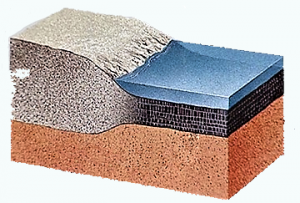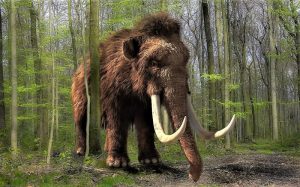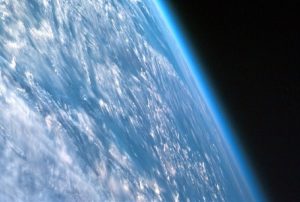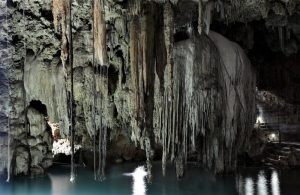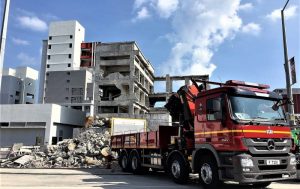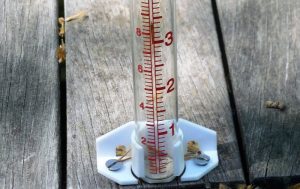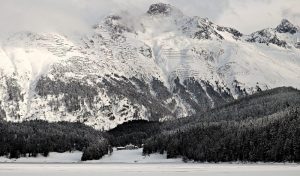Earth’s crust
Earth's crust is an important layer which is extremely thin which is composed of rocks which form the outermost layer of our planet. It is equivalent to less than half of 1 percent of the planet's total mass, but it plays a vital role in most of the natural cycles that occur throughout the Earth. The Earth's crust is made up of different layers, each made up of different elements and their plates are constantly floating on different materials.
What is the Earth's crust?
The Earth's crust is one of the most important and most external layers of the earth which is composed mainly of rocks, with different thicknesses, the crust is formed by several different layers all in density and materials that make them up.
Characteristics of Earth’s crust
The main characteristics of Earth’s crust are as follows:
- The crust can extend more than 80 kilometers in some points and less than one kilometer in others, so it is very variable.
- It is formed by several types of rocks such as igneous, metamorphic and sedimentary.
- Most of the rocks that form it were originated as granite or basalt.
- It is formed by plates and these are floating.
- The crust is located below the mantle.
- The upper part of the mantle is composed mainly of peridotite, a rock denser than the common rocks in the superimposed crust.
- The boundary between the crust and the mantle is conventionally placed in the Mohorovicic discontinuity, a boundary defined by a contrast in seismic velocity.
- It occupies less than 1% of the Earth’s volume.
- Together with the underlying mantle it forms the lithosphere.
Formation of the Earth’s crust
The earth was formed 4.6 billion years ago and when surface cooling began, its crust, mantle and core also began to differentiate. The silicates that had a lighter composition went up creating the mantle and the crust, and the heavier ones sank giving form to the nucleus. The gases emanating from the volcanic eruptions formed the atmosphere. For this reason, it is estimated that the Earth’s crust was formed approximately 2.5 million years ago, or earlier.
Types
- Oceanic crust: The ocean covers 75% of the planet’s surface and is thinner than the continental crust. It has three different levels: the lower or level III that limits with the mantle in the Mohorovich Discontinuity and is composed of plutonic rocks. The second level or basalt level II is formed by rocks of volcanic origin and a thicker area formed by dikes. Level I is on the dikes and is formed by a series of sediments in the middle of the ocean and some territories near the continents where the magmatic rocks are deposited.
- Continental crust: This is less homogeneous and has different origins. The rocks that predominate are igneous rocks such as granite, as well as metamorphic rocks. It has more silicon and is less dense than the oceanic crust. You can find quartz, oxygen, silicon, aluminum, potassium and iron among others.
Layers
There are three types of layers that make up the Earth’s crust, which are:
- Sedimentary layer: Formed by sedimentary rocks located on continents and continental shelves. This layer is formed by rocks that are part of the mountain ranges of the continents and the base of the continental shelf.
- Granite layer: It is formed by rocks very similar to granite. It is the fundamental part of the different continental zones. Conrad’s discontinuity, also known as the “lithosphere channel”, which marks the limits of the granite layer and the lower basaltic layer, is located here. It is a discontinuous layer which is floating in isostatic equilibrium over the basaltic layer.
- Basalt layer: Composed of rocks similar to basalt. It is a continuous layer around the Earth.
Movements of the Earth’s crust
There are two types of crust movements, orogenic and epirogenic. The orogenic movements are movements of vertical type and are faster, producing folds (responsible for the formation of mountain ranges), and faults, which are fractures of the cortex that occur when the strata do not withstand the pressures, these faults can be vertical, horizontal or normal and cause earthquakes.
Depth
The Earth’s crust radius is 6,378 kilometers in part of Equator and the variation between the highest continental height and the deepest sea does not exceed 20 kilometers. The distance from sea level to the rigid mantle or crust is approximately 35 kilometers.
Chemical components and elements
The most important components found in the Earth’s crust are: oxygen, silicon, aluminum, calcium, iron, sodium, potassium and magnesium. The chemical elements can be found in their natural state such as gold and Sulphur, they can be composed of different materials and they can also be composed of lead and copper combined with other materials. There are oxides, halides, nitrates, phosphates and carbonates.
Minerals
In addition to the chemical elements, we can find silicate minerals such as quartz and feldspar.
Phenomena of the Earth’s crust
Some of the phenomena that occur in the Earth’s crust are the following:
- Earthquakes: movements of the Earth’s crust that produce deformities in the rocks located in the interior of the earth affecting the surface.
- Tsunamis: movement of the marine crust creating waves of great height and power.
- Volcanic eruption: the passage of lava and ash from the interior of the earth to the exterior.
- Landslides: these are the product of changes in the structure of the earth.
- Landslides: landslides due to loss of stability.
- Floods: Invasion of water either from a river, lake or sea by heavy rainfall.
- Droughts: Deficiency in the amount of rain in a given place.
Importance of the Earth’s crust
The main importance of the Earth’s crust is that on it is where life takes place and develops. Different natural processes are carried out in the cortex and living beings, both plants and animals, can have a suitable place for life. It is the place where plants grow, food is cultivated and living things evolve.
How to cite this article?
Briceño V., Gabriela. (2019). Earth’s crust. Recovered on 4 January, 2025, de Euston96: https://www.euston96.com/en/earths-crust/
